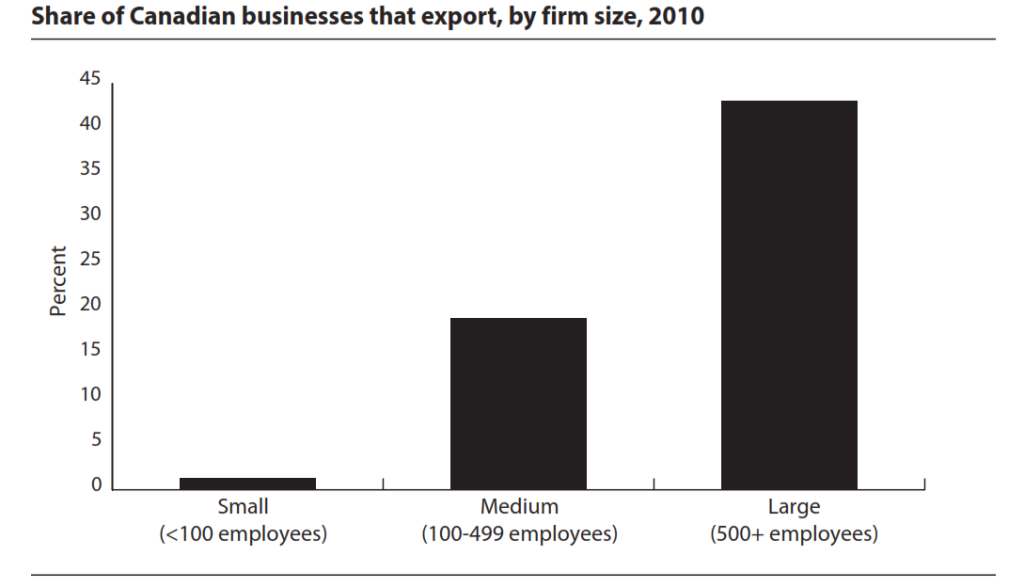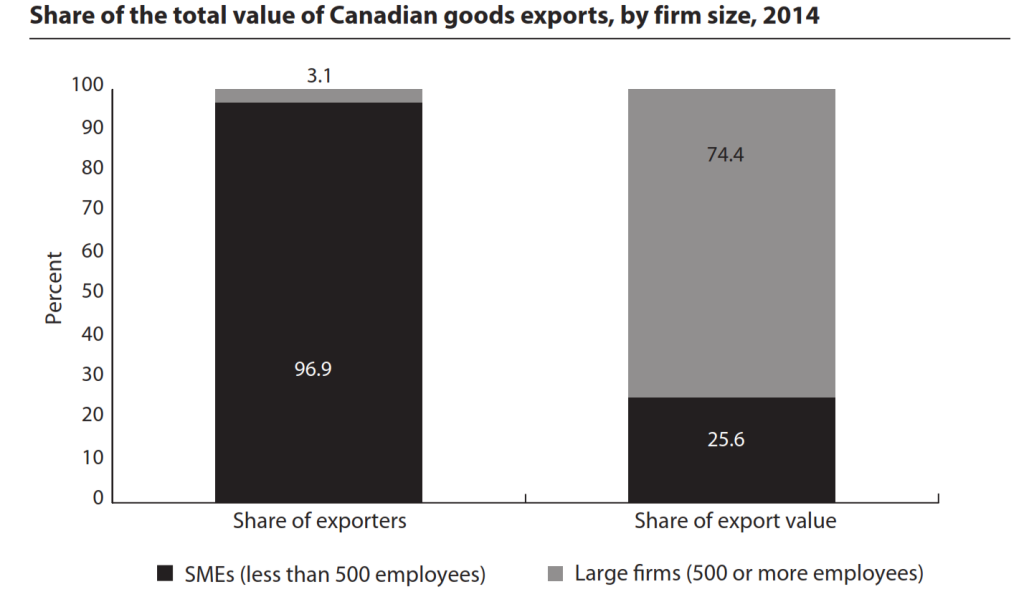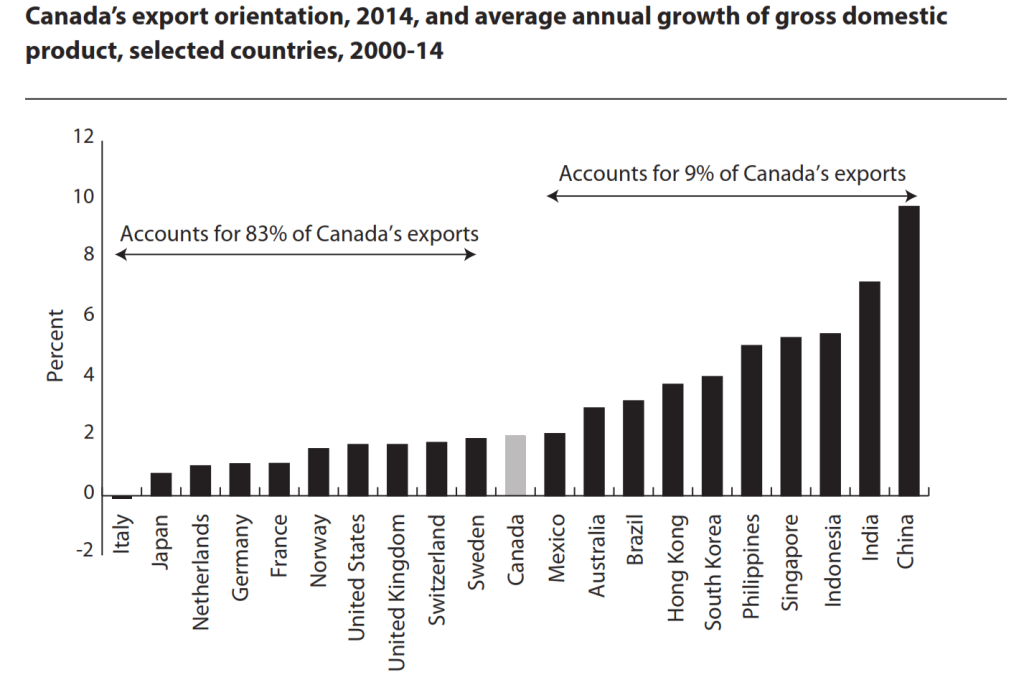
The latest commentary in the IRPP’s trade volume is from John Manley and Brian Kingston (of the Business Council of Canada), who bring a valuable perspective on trade from some of the largest businesses in Canada. They argue that an international commerce strategy that positions Canadian firms to take advantage of global markets will be central to securing our long-term prosperity, and they propose several areas for concrete policy actions, including launching bilateral trade talks with China.
Large firms are the main drivers of Canada’s international trade. Because they generally have more resources — such as: financing; management networks and partnerships; legal and linguistic supports, etc. — they’re often the first movers into new markets. Large firms are much more likely to export:
And they contribute a disproportionate share of Canada’s exports. For instance, despite accounting for just 3% of Canadian goods-exporting enterprises in 2014, large firms contributed almost three-quarters of the total value of exports:
Moreover, the top 10 Canadian goods exporters alone accounted for one-quarter of total export values, while the top 50 firms generated 55% of export values.
Canada-US challenges
Manley and Kingston identify Canada’s declining competitiveness in the US market as a key policy challenge. They note that, in 2015 — for the first time in history — preliminary data show that US goods trade with China exceeded that of Canada-US goods trade ($598 billion vs. $576 billion). Among other policy fixes, they recommend streamlining market access between Canada and the US by adopting a default policy of “align or explain” for Canada-US regulatory cooperation. This would allow Canada to maintain unique standards for health, safety and the environment, when a ‘national interest’ objective justifies maintaining a difference.
Implementing important trade deals
They argue to push ahead and implement the big outstanding trade deals that would improve Canadian market access abroad — namely CETA with the European Union; the Trans-Pacific Partnership; and to conclude long-drawn-out talks with India. Importantly, they say we need to develop a China strategy, and a key part of this would be to kick start bilateral trade talks. Finally, they show that the share of emerging markets in Canada’s export mix remains underdeveloped, which suggests further efforts are needed to continue to diversify Canada’s trade.
You can read the full commentary is here, which proposes several other policy recommendations, including unilateral tariff elimination.










